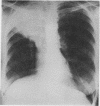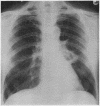Abstract
Two hundred and ninety-five patients who underwent resection for carcinoma of the lung are reviewed, with a particular view to size of tumour and survival rate. The carcinomas were divided into four groups by size. It was found that the larger the tumour the worse was the prognosis. The prognosis in large carcinomas could not be directly attributed to a preponderance of an unfavourable cell type, lymph node metastasis or mediastinal extension. Vascular dissemination at the time of operation is believed to be a major factor for the poor prognosis in this group of carcinomas. Radiotherapy before operation and early ligation of the pulmonary veins might improve the results of resection of large carcinomas.
Full text
PDF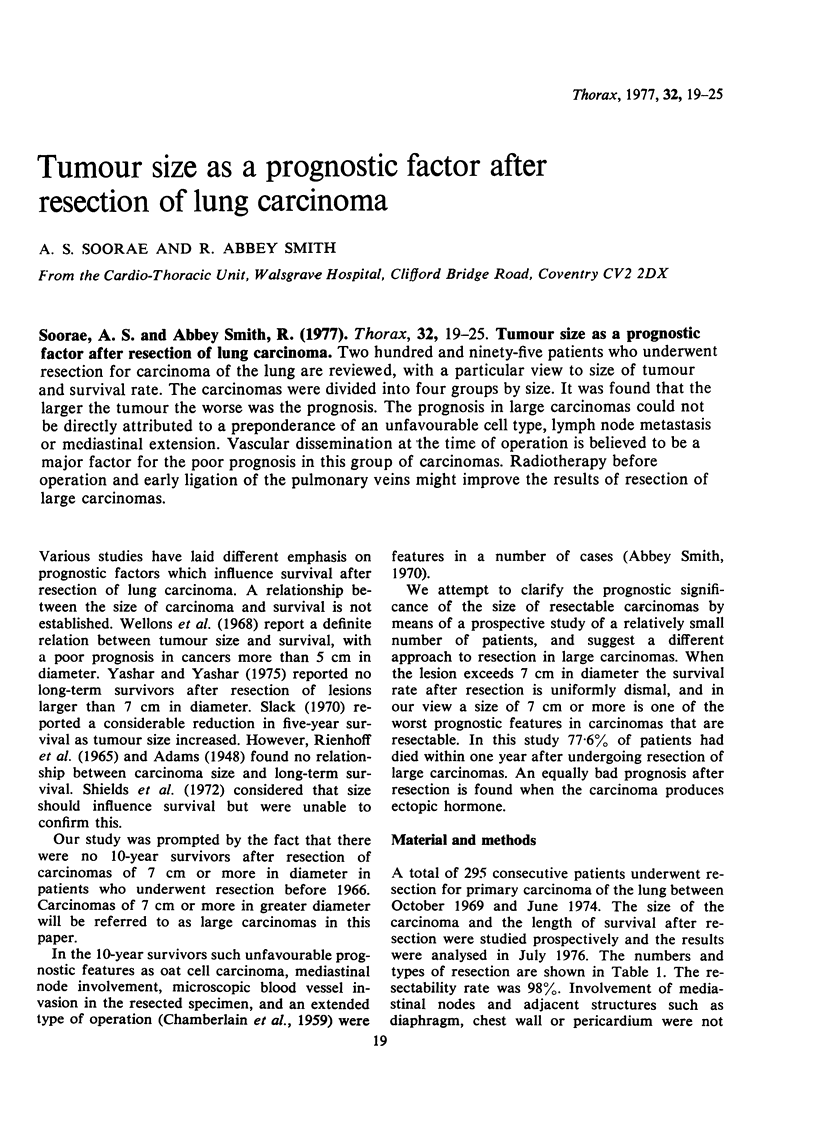
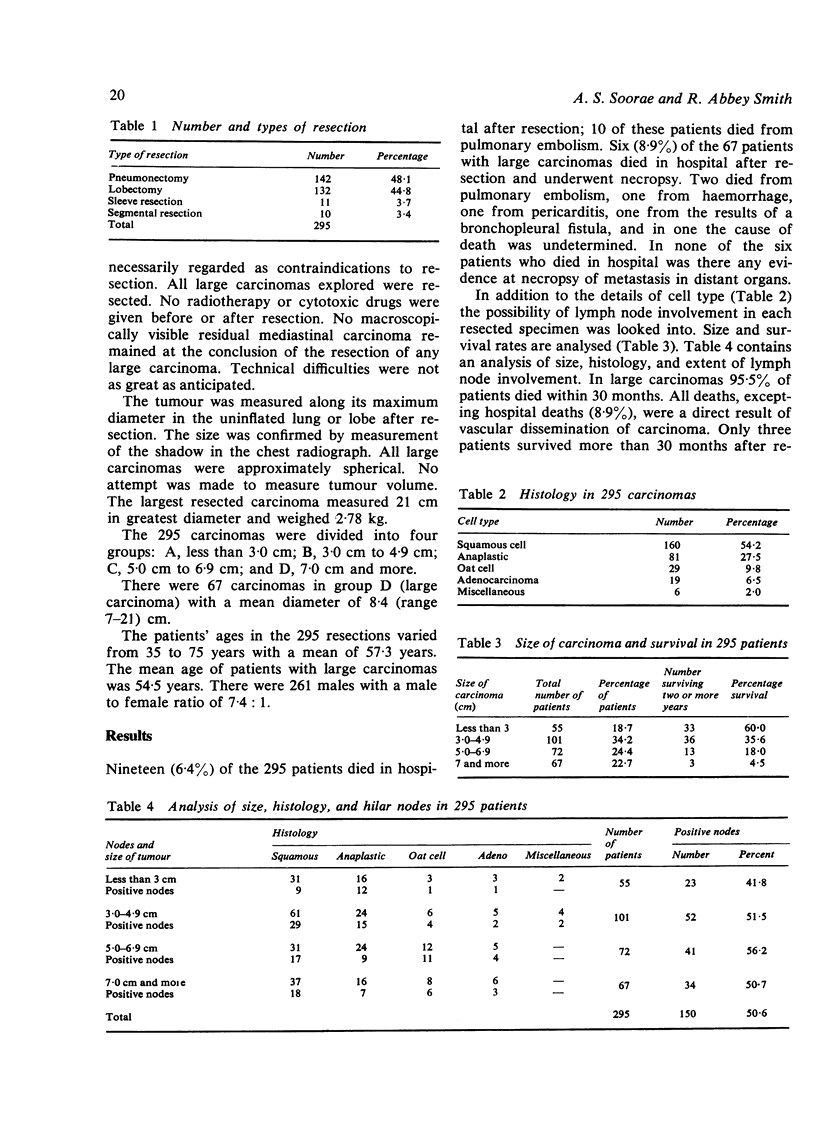
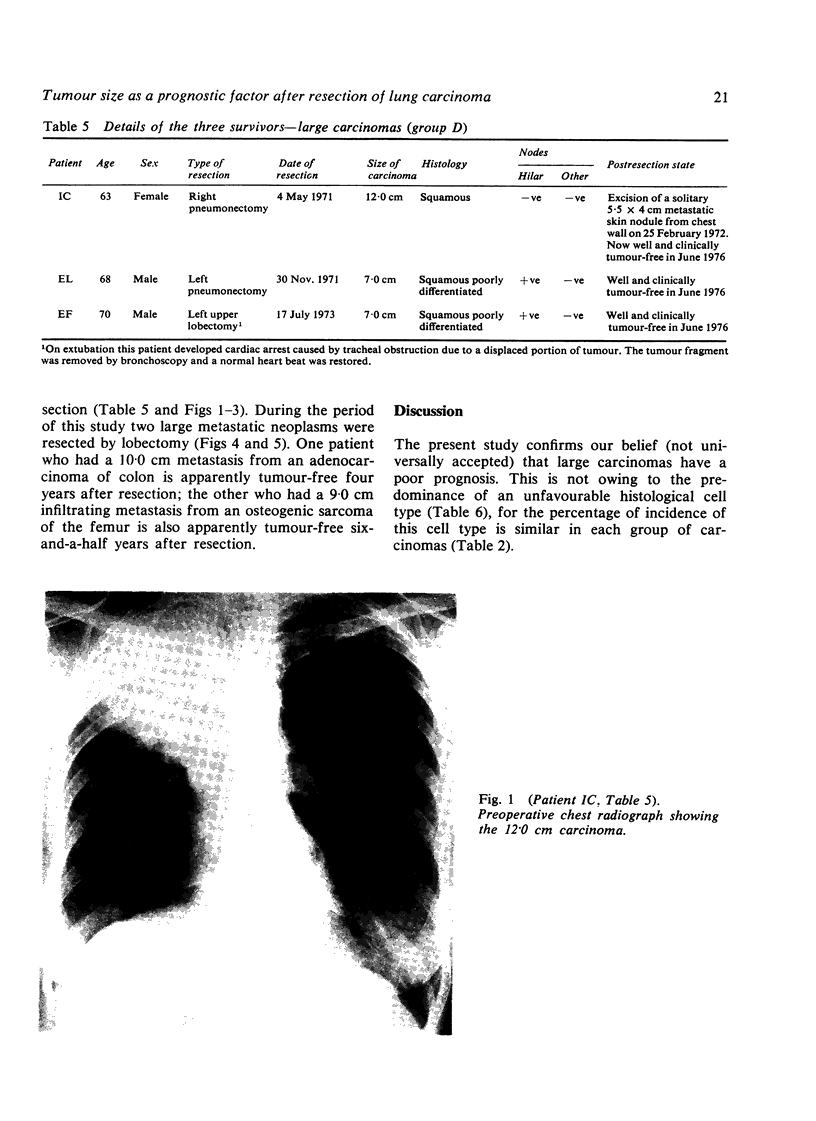
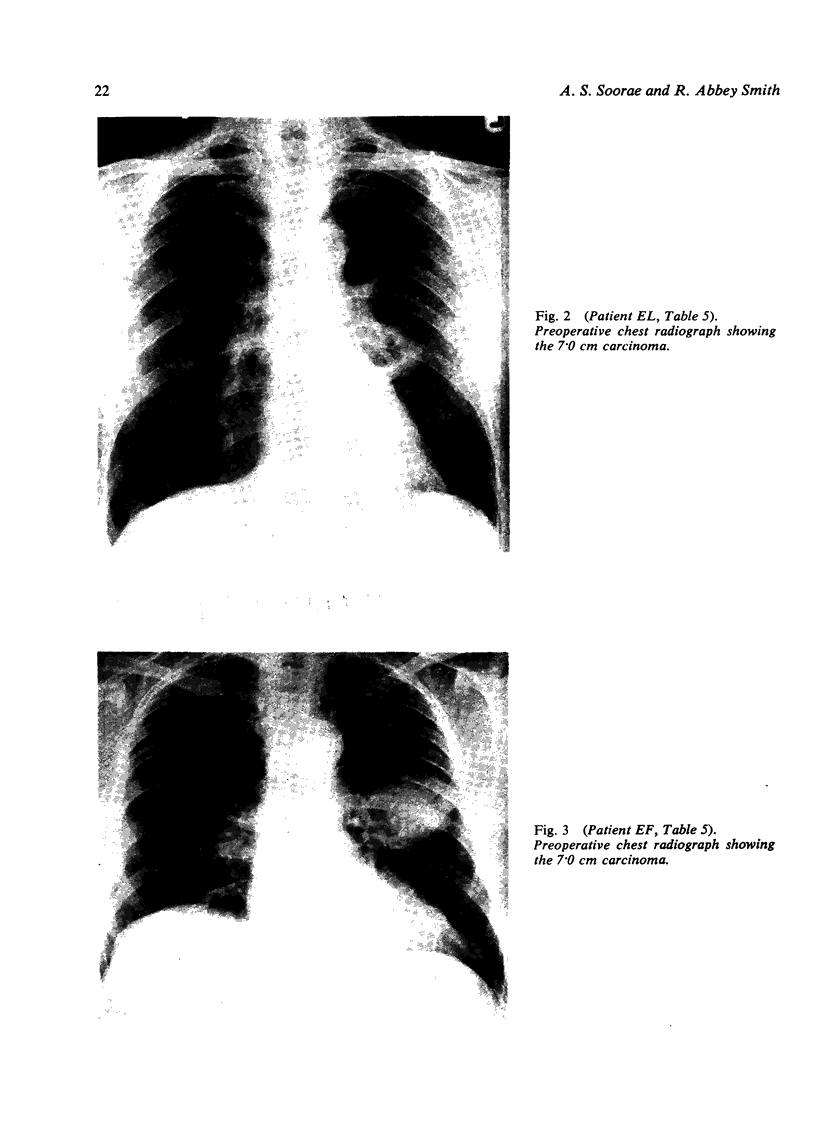
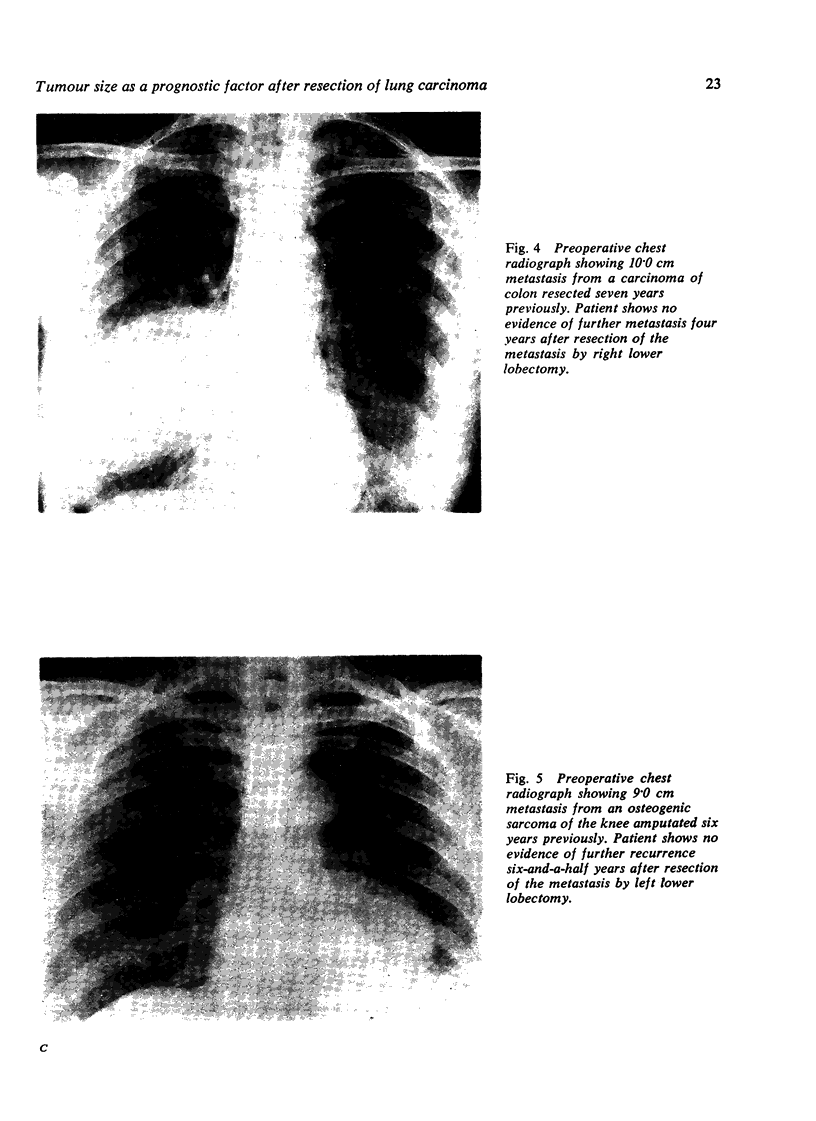
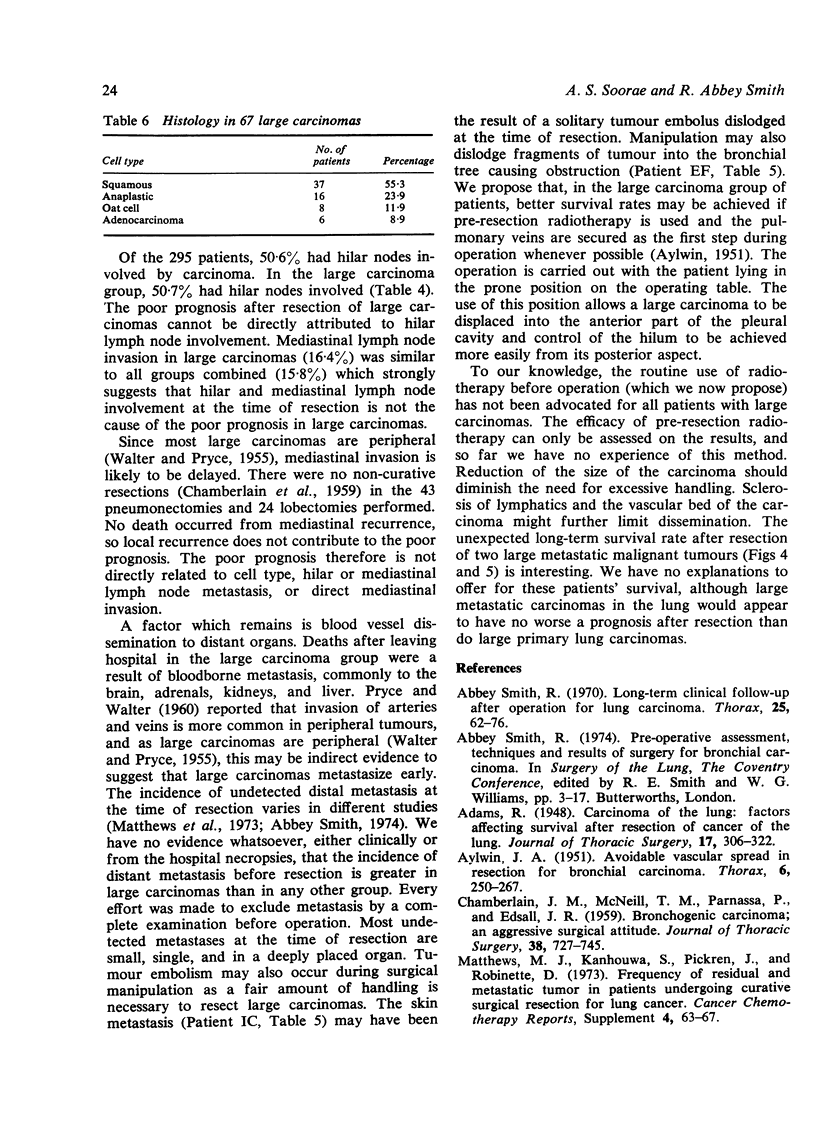
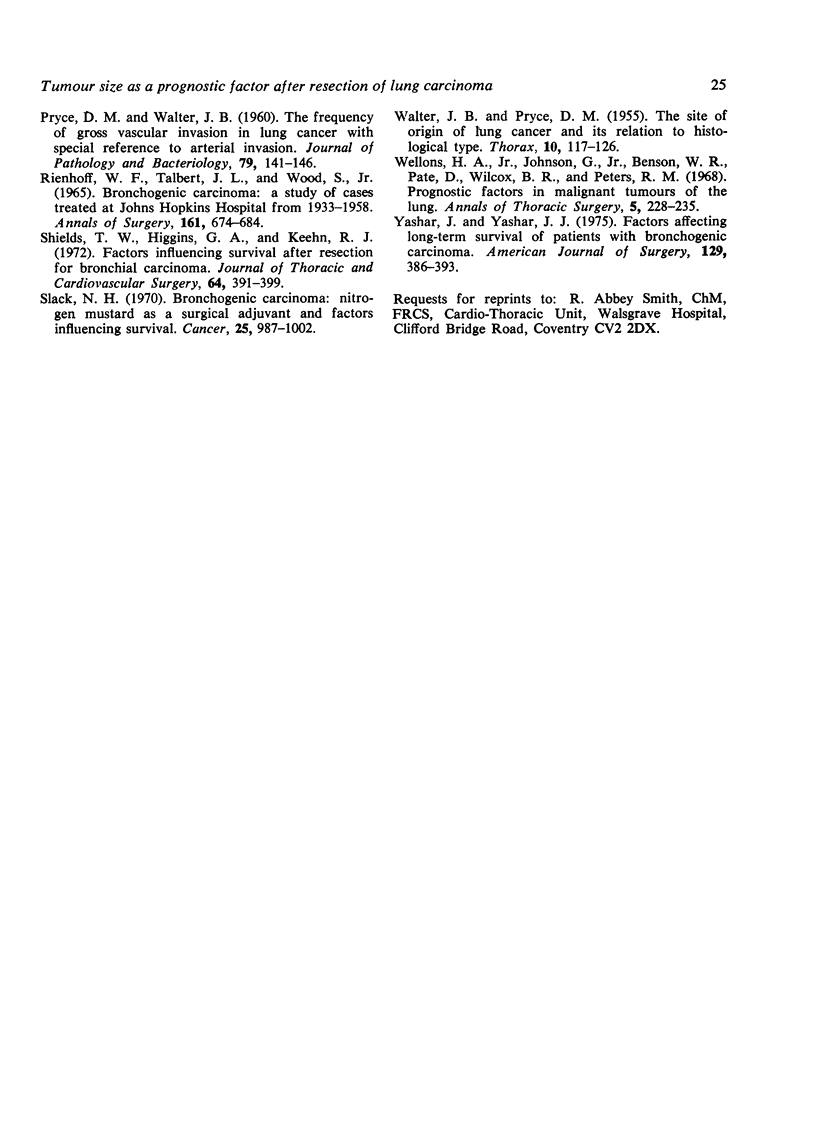
Images in this article
Selected References
These references are in PubMed. This may not be the complete list of references from this article.
- AYLWIN J. A. Avoidable vascular spread in resection for bronchial carcinoma. Thorax. 1951 Sep;6(3):250–267. doi: 10.1136/thx.6.3.250. [DOI] [PMC free article] [PubMed] [Google Scholar]
- CHAMBERLAIN J. M., McNEILL T. M., PARNASSA P., EDSALL J. R. Bronchogenic carcinoma: an aggressive surgical attitude. J Thorac Cardiovasc Surg. 1959 Dec;38:727–745. [PubMed] [Google Scholar]
- Matthews M. J., Kanhouwa S., Pickren J., Robinette D. Frequency of residual and metastatic tumor in patients undergoing curative surgical resection for lung cancer. Cancer Chemother Rep 3. 1973 Mar;4(2):63–67. [PubMed] [Google Scholar]
- PRYCE D. M., WALTER J. B. The frequency of gross vascular invasion in lung cancer with special reference to arterial invasion. J Pathol Bacteriol. 1960 Jan;79:141–146. doi: 10.1002/path.1700790117. [DOI] [PubMed] [Google Scholar]
- RIENHOFF W. F., 3rd, TALBERT J. L., WOODS J. R. BRONCHOGENIC CARCINOMA: A STUDY OF CASES TREATED AT JOHN HOPKINS HOSPITAL FROM 1933-1958. Ann Surg. 1965 May;161:674–687. doi: 10.1097/00000658-196505000-00005. [DOI] [PMC free article] [PubMed] [Google Scholar]
- Shields T. W., Higgins G. A., Keehn R. J. Factors influencing survival after resection for bronchial carcinoma. J Thorac Cardiovasc Surg. 1972 Sep;64(3):391–399. [PubMed] [Google Scholar]
- Slack N. H. Bronchogenic carcinoma: nitrogen mustard as a surgical adjuvant and factors influencing survival. University surgical adjuvant lung project. Cancer. 1970 May;25(5):987–1002. doi: 10.1002/1097-0142(197005)25:5<987::aid-cncr2820250502>3.0.co;2-g. [DOI] [PubMed] [Google Scholar]
- WALTER J. B., PRYCE D. M. The site of origin of lung cancer and its relation to histological type. Thorax. 1955 Jun;10(2):117–126. doi: 10.1136/thx.10.2.117. [DOI] [PMC free article] [PubMed] [Google Scholar]
- Wellons H. A., Jr, Johnson G., Jr, Benson W. R., Pate D., Wilcox B. R., Peters R. M. Prognostic factors in malignant tumors of the lung: an analysis of 582 cases. Ann Thorac Surg. 1968 Mar;5(3):228–235. doi: 10.1016/s0003-4975(10)66337-0. [DOI] [PubMed] [Google Scholar]
- Yashar J., Yashar J. J. Factors affecting long-term survival of patients with bronchogenic carcinoma. Am J Surg. 1975 Apr;129(4):386–393. doi: 10.1016/0002-9610(75)90182-8. [DOI] [PubMed] [Google Scholar]



